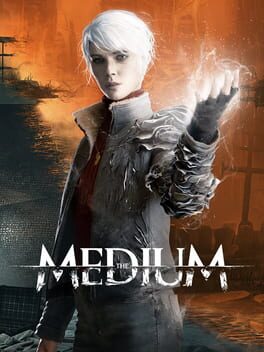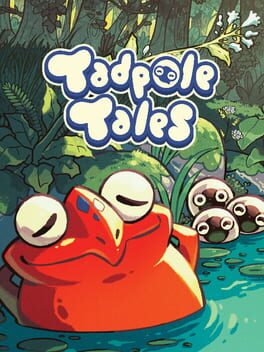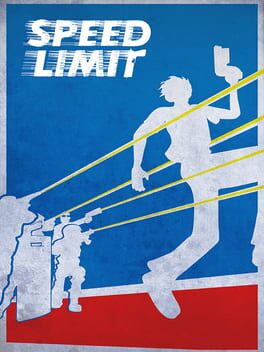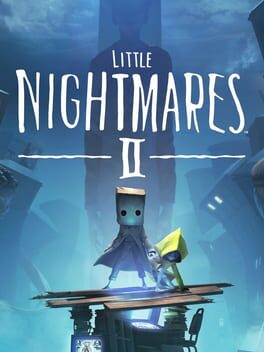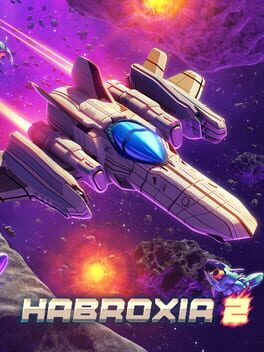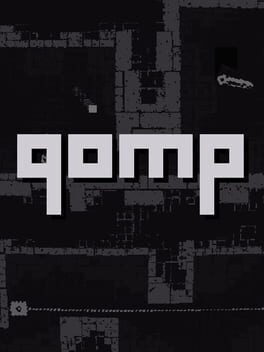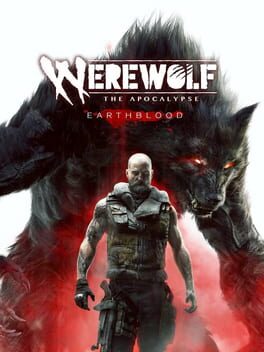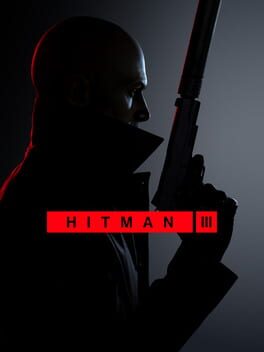gotyquest
Imprecise & floaty controls, some of the messiest color clashing pixel art I've seen in a long time, and a gameplay loop with a misunderstanding of what makes speedrunning enjoyable so every stage hazard is a momentum halting annoyance. The cute main character sprite and real good music couldn't save this game from itself.
2021
Bloober Team's highest budget game yet succeeds and fails to equal degrees.
On the plus side. the Beksiński inspired horror imagery is consistently good and occasionally stunning, and traversing through the Niwa resort is an exercise in great atmospheric level design. Unfortunately, the game fumbles with a protagonist that's way too chatty and a narrative that is so inconsistent that by the ending I pretty much lost interest entirely, but ymmv.
The dual realities are an awkward storytelling gimmick more often than anything else, for every cool moment of traversal there's a cutscene that has characters on one half of the screen and stilted empty-room drama class pantomiming from the protagonist on the other.
It's a fine game. It's way more Life Is Strange than it is Silent Hill, and I don't think that's what they were going for. However, there's enough good stuff here to say that if you're ever in the mood for a short spooky narrative driven adventure, you could do worse than The Medium.
On the plus side. the Beksiński inspired horror imagery is consistently good and occasionally stunning, and traversing through the Niwa resort is an exercise in great atmospheric level design. Unfortunately, the game fumbles with a protagonist that's way too chatty and a narrative that is so inconsistent that by the ending I pretty much lost interest entirely, but ymmv.
The dual realities are an awkward storytelling gimmick more often than anything else, for every cool moment of traversal there's a cutscene that has characters on one half of the screen and stilted empty-room drama class pantomiming from the protagonist on the other.
It's a fine game. It's way more Life Is Strange than it is Silent Hill, and I don't think that's what they were going for. However, there's enough good stuff here to say that if you're ever in the mood for a short spooky narrative driven adventure, you could do worse than The Medium.
2021
Tadpole Tales is like playing a classic Saturday Morning Cartoon. The hand drawn art and animations are staggering for a free release, and the 'clean-em-up' environmental spin on the genre allows for that art to comfortably shine without compromising its lighthearted optimistic tone.
While it only takes about 10 minutes to see through to completion if you survive til the end, don't let the charm fool you, this is a deceptively challenging little shmup. Weaving through projectiles as well as learning the movesets and strategies for the game's three bosses will take you a few attempts, so while the length is short on paper you can expect to spend a bit more time learning the ropes. There are a few instances where I think your hitboxes aren't quite defined well enough, and a couple times where I got cornered into taking a hit that seemed avoidable, but those complaints are minor in the grand scheme of things.
Tadpole Tales also includes an Expert mode after you complete the game, but aside from a graphical change (that I do think is worth seeing!) the enemy patterns and boss difficulty stays exactly the same, leaving me to think 'Marathon' mode might've been a more apt title than Expert.
I can't believe this is free, and I hope and pray that there are Indie Publishers already getting their ducks (or tadpoles) in a row in an effort to court this team into making something more substantial. If Tadpole Tales is their proof of concept, they absolutely deserve the funding to take a crack at a full length title.
And did I mention it's free?! Why are you even reading this, just play it for yourself!
2021
Just pure, unabashed, pedal to the metal fun.
The way Speed Limit is never content to stay in one mode for too long is something more games could learn from, as the seamless transitions across a variety of arcade-inspired gameplay styles keep the game fresh and exciting for its snappy and speedrunnable runtime.
The checkpointing is tough but fair in most places, requiring you to learn the mechanics fast and execute them faster. The only area that I feel stumbles here is the final encounter, which I feel takes a bit too long and requires a bit too much precision to take down. But, at the risk of having too many driving puns, that's the only speed bump I can really pinpoint.
The way Speed Limit is never content to stay in one mode for too long is something more games could learn from, as the seamless transitions across a variety of arcade-inspired gameplay styles keep the game fresh and exciting for its snappy and speedrunnable runtime.
The checkpointing is tough but fair in most places, requiring you to learn the mechanics fast and execute them faster. The only area that I feel stumbles here is the final encounter, which I feel takes a bit too long and requires a bit too much precision to take down. But, at the risk of having too many driving puns, that's the only speed bump I can really pinpoint.
2021
Little Nightmares II might be the perfect sequel.
In fact, most of my problems with the first game are wholely solved here. The addition of Six as an AI-Controlled partner brilliantly establishes personal stakes to the story that the first game sorely lacked, as well as innovates with a more clever and cooperative approach to puzzle solving. Not only does Six help as an extra set of hands, her AI might be the most natural and lifelike AI companion I've ever experienced in a game.
The setpieces are more thrilling, the tone is more threatening, the gameplay mechanics are more varied and interesting, the visuals (especially the lighting) are more captivating, the whole journey is more awe-inspiring.
Aside from like, two combat encounters with frustratingly tight timings? And maybe some of the jumps are hard to judge sometimes? I really didn't have any problems with this game at all. It's just the perfect sequel, and perhaps my favorite adventure platformer.
In fact, most of my problems with the first game are wholely solved here. The addition of Six as an AI-Controlled partner brilliantly establishes personal stakes to the story that the first game sorely lacked, as well as innovates with a more clever and cooperative approach to puzzle solving. Not only does Six help as an extra set of hands, her AI might be the most natural and lifelike AI companion I've ever experienced in a game.
The setpieces are more thrilling, the tone is more threatening, the gameplay mechanics are more varied and interesting, the visuals (especially the lighting) are more captivating, the whole journey is more awe-inspiring.
Aside from like, two combat encounters with frustratingly tight timings? And maybe some of the jumps are hard to judge sometimes? I really didn't have any problems with this game at all. It's just the perfect sequel, and perhaps my favorite adventure platformer.
2021
While undoubtedly an aesthetic glow-up from its 2019 predecessor, Habroxia 2's recycling of gameplay ideas result in it failing to live up to the quality its stylistic overhaul set.
Habroxia 2 introduces both twin-stick shooting, as well as Star Fox-style branching level paths, exciting innovations to the Habroxia formula on paper. Unfortunately, the game never capitalizes on either mechanic, with both feeling more like superficial additions for the sake of differentiation, and less like natural gameplay evolution.
It's not a bad game, but with the length largely the same as the first, and copy-pasted boss encounters from the first, it feels less like Habroxia 2 and more like Habroxia: Definitive Edition. I found myself bored.
Habroxia 2 introduces both twin-stick shooting, as well as Star Fox-style branching level paths, exciting innovations to the Habroxia formula on paper. Unfortunately, the game never capitalizes on either mechanic, with both feeling more like superficial additions for the sake of differentiation, and less like natural gameplay evolution.
It's not a bad game, but with the length largely the same as the first, and copy-pasted boss encounters from the first, it feels less like Habroxia 2 and more like Habroxia: Definitive Edition. I found myself bored.
2021
If you were to have me write this review based on the first two hours of playing this game, I would have given it a 1 - 1.5. But something happened around the halfway point, call it enlightenment or call it Stockholm Syndrome, even I'm not quite sure.
You have to be ready to just handwave a whole bunch of janky nonsense in order to begin to appreciate the good elements of Werewolf. It has absolutely unnecessary RPG elements complete with Mass Effect-esque radial dialogue choices, a totally half-baked Stealth mechanic that frustrates way more than excites, and the samey environments get stale within the first hour. But, man, let me tell you? It's fun to hit that Enrage button and tear up a room full of soldiers, every time.
And that's where the Stockholm Syndrome starts to kick in, because by the end, once I stopped caring about quality and started focusing on fun, I actually found myself sorta invested the the D-Movie plotline, and Cahal's revenge mission. I found myself playing by the game's rules, attempting to overcome the shoddy stealth mechanic, knowing that if and when it inevitably came crashing down I could always just hit Enrage and go berserk. I have no idea how it happened, but when it was all said and done, I'm gonna be honest, I actually kinda liked this game.
You have to be ready to just handwave a whole bunch of janky nonsense in order to begin to appreciate the good elements of Werewolf. It has absolutely unnecessary RPG elements complete with Mass Effect-esque radial dialogue choices, a totally half-baked Stealth mechanic that frustrates way more than excites, and the samey environments get stale within the first hour. But, man, let me tell you? It's fun to hit that Enrage button and tear up a room full of soldiers, every time.
And that's where the Stockholm Syndrome starts to kick in, because by the end, once I stopped caring about quality and started focusing on fun, I actually found myself sorta invested the the D-Movie plotline, and Cahal's revenge mission. I found myself playing by the game's rules, attempting to overcome the shoddy stealth mechanic, knowing that if and when it inevitably came crashing down I could always just hit Enrage and go berserk. I have no idea how it happened, but when it was all said and done, I'm gonna be honest, I actually kinda liked this game.
2021
With the most dynamic set of scenarios in the World of Assassination trilogy, tighter mission story design, and a surprisingly focused and engaging conclusion to the relatively nebulous story from the first two games, Hitman 3 outdoes itself, becoming the final piece in a rare trilogy where each release is better than the last.


